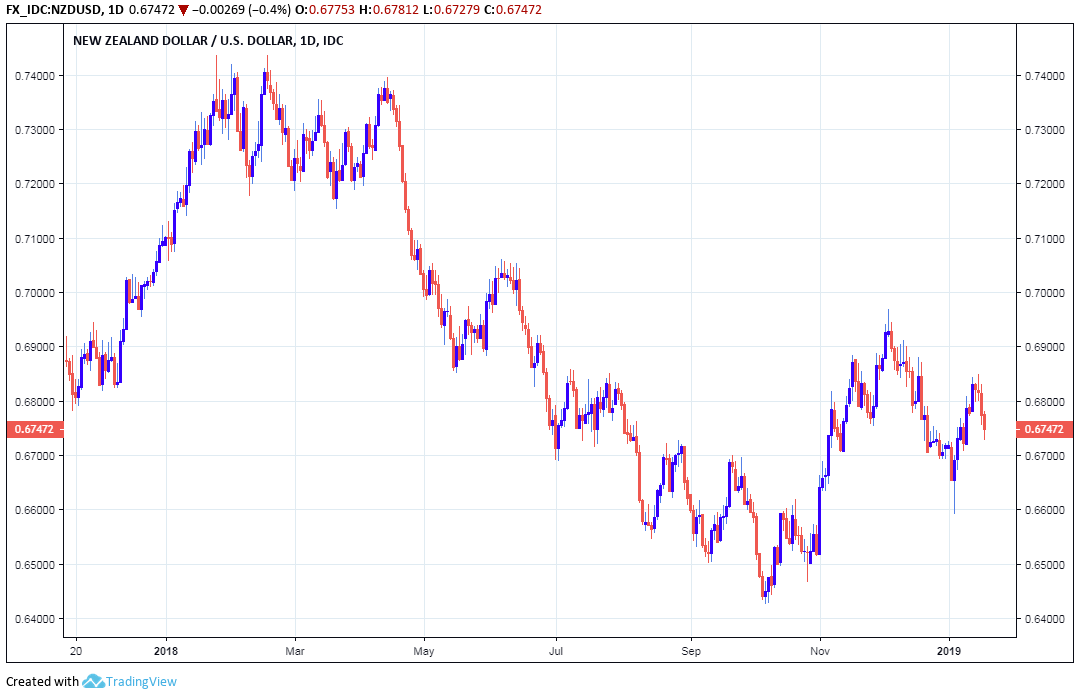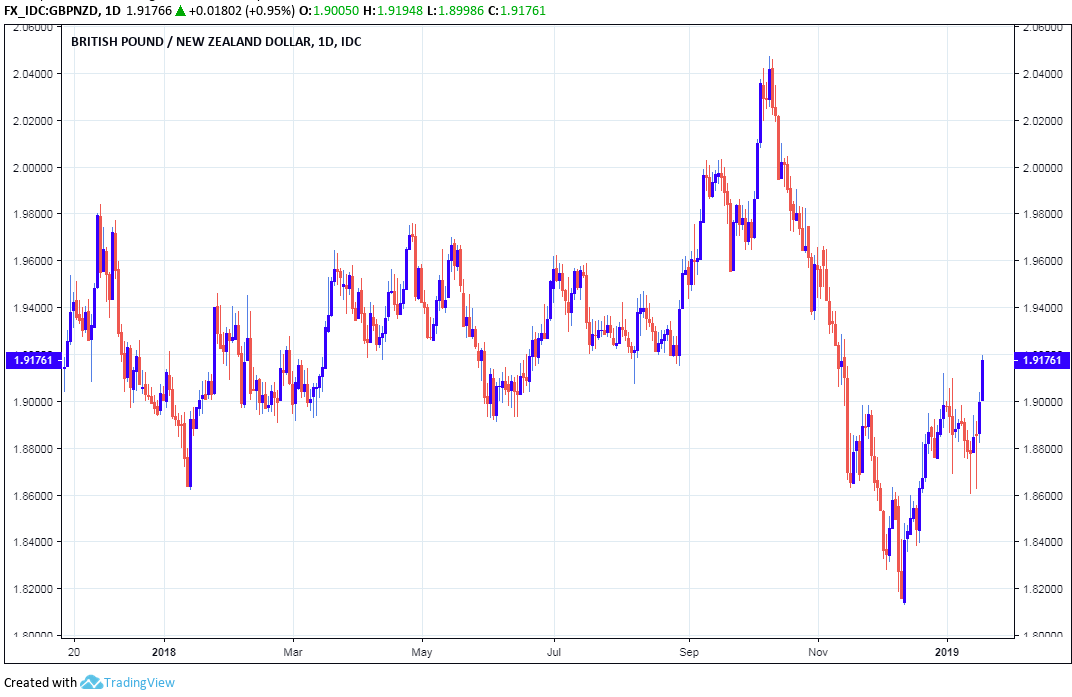New Zealand Dollar to Rise in 2019 says BNZ, as Others Forecast Losses
- Written by: James Skinner

© Naru Edom, Adobe Stock
- NZDUSD rate to recover lost ground this year says BNZ.
- As Fed shift sees rate outlook become less of a burden.
- But Rabobank says RBNZ policy will mean more losses.
The New Zealand Dollar will rise gently this year as the Federal Reserve (Fed) moves to the sidelines and investors rediscover their appetite for risk assets like the Kiwi, according to analysts at BNZ, a part of National Australia Bank.
New Zealand's Dollar will be a key beneficiary of a more docile Fed given the impact its interest rate policy had on the Kiwi in 2018. Four rate hikes drove U.S. government bond yields above those of their Kiwi counterparts last year, diverting capital away from New Zealand and into America.
Fed Chairman Jerome Powell said in January the bank will be "patient" before lifting its interest rate again because it wants time to assess whether a slowdown in the global economy will rebound on the U.S. and dent growth there as well. BNZ says the Fed is unlikely to raise rates this year.
"Relative NZ-US monetary policy was a clear negative factor last year, which doesn’t apply in the year ahead, although we’d note that NZ short-term rates are likely to remain below US rates for a considerable time," says Jason Wong, a strategist at BNZ.
The Kiwi will also benefit if U.S. and Chinese officials manage to strike a deal that ends the trade war between the world's two largest economies. Negotiators have until the end of February to reach a deal or the 10% U.S. tariff on imports from China will automatically rise to 25%.
Powell's January 04 comments came shortly before Beijing's negotiators claimed discussions have "laid the foundations" for a deal to be struck over the coming weeks. The White House wants China to end its "unfair trading practices" if tariffs on its exports are to be removed.
The tariff fight saw China's economy slow in 2018 and many economists say it will weaken again this year. This combined with a softening outlook in Europe and the fact President Trump's tax cuts are no longer stimulating the U.S. economy have stoked fears of an all-out global slowdown.
Such fears are a threat to the Kiwi Dollar because the currency is underwritten by New Zealand's agricultural exports to the rest of the world and prices of all commodities, including the agricultural ones, are sensitive to changes in the global growth outlook.
"The key downside risk for the NZD would be a potential US-China trade deal turning to custard, or a renewed bout of weaker global risk appetite on fears that the growth environment is taking a turn for the worst, with the US economy on a path towards recession. However, if the Fed doesn’t hike rates again we find that scenario unlikely," Wong says.

Above: NZD/USD rate shown at daily intervals.
Wong and the BNZ team say the threat of a serious global downturn will be neutralised by a U.S.-China accord and that such a development would enable the Kiwi to recover the ground lost to the U.S. Dollar last year.
They forecast the NZD/USD rate will return to 0.70 in time for year-end. However, the Pound-to-New-Zealand-Dollar rate is forecast to rise all the way up to 2.08, from 1.91 Thursday, as uncertainty over the shape of the UK's exit from the EU is removed by a deal that largely preserves the status quo.

Above: Pound-to-New-Zealand-Dollar rate shown at daily intervals.
Not all firms are as optimistic as BNZ with their forecasts for the Kiwi this year. J.P. Morgan strategists said this January the currency will suffer more punishing losses in 2019, while Dutch lender Rabobank also announced its own dire predictions Thursday.
"The probability that the next move in RBNZ policy could be a rate cut may have increased. We retain a bearish view on the outcome for NZD/USD and see scope for a move towards 0.63 on a 12 mth view," says Jane Foley, a strategist at Rabobank, in a note to clients.
The Reserve Bank of New Zealand (RBNZ) said in December it is considering requiring Kiwi banks to double the amount of equity and debt capital they hold in reserve to protect themselves against losses in the future.
There are reasons for why this might be a good idea from a financial stability perspective, which few have quibbled with, although if implemented the policy could prevent the bank from lifting its interest rate over the coming years.
Foley and the Rabo team say the capital requirements proposal might even eventually force the RBNZ to cut its own interest rate to a fresh record low because banks will have to lift mortgage rates charged to borrowers in order to earn the extra capital required by policymakers.
That would be tantamount to the RBNZ lifting the cash rate, only it would come without the positive spillover for the Kiwi Dollar, because higher mortgage costs would reduce spending in the economy by eating up more of households' disposable incomes.
The RBNZ has held its interest rate at 1.75% since the end of 2016, citing below-target inflation and a growth outlook that is insufficient to facilitate a meaningful pick-up in price pressures over the short term.
This policy, combined with aggressive rate hikes from the Fed last year, was a big part of what hurt the Kiwi in 2018. And although the Fed's move to the sidelines could see interest rate pressures become less of a burden for the Kiwi in 2019, an RBNZ rate cut would render that idea little more than a pipe dream.
"Q3 economic growth in New Zealand unexpectedly dropped to its slowest pace in almost 5 years at 0.3% q/q, sparking speculation that the RBNZ could be biased towards a rate cut later this year. This week’s news of plunge in credit and debit card spending in December suggests that GDP growth in Q4 may have also been weak," Foley warns.
Advertisement
Bank-beating exchange rates. Get up to 5% more foreign exchange by using a specialist provider to get closer to the real market rate and avoid the gaping spreads charged by your bank when providing currency. Learn more here




